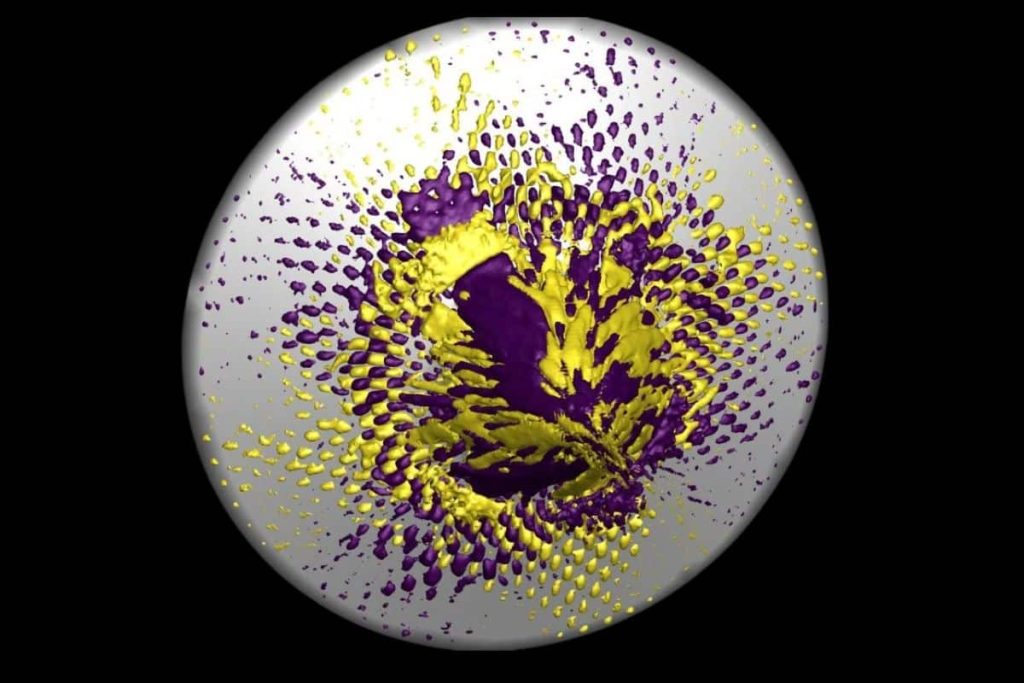A revolutionary simulation study conducted by researchers at the University of Illinois Urbana-Champaign has revealed previously unseen flow instabilities surrounding hypersonic vehicles traveling at Mach 16. This challenges long-held beliefs regarding fluid dynamics at extreme velocities. The study, which was published in March 2025 in Physical Review Fluids, uncovers unexpected turbulence patterns that could significantly alter the engineering of future hypersonic vehicles.
The discoveries—derived from high-resolution 3D modeling and carried out on a cutting-edge supercomputer—represent a critical advancement in our grasp of aerothermal behavior at ultra-high speeds, potentially reshaping the design of next-generation aerospace systems.
Unforeseen Turbulence in Hypersonic Travel
Hypersonic flight, characterized by speeds exceeding Mach 5, poses formidable engineering challenges due to the complex interactions between air molecules and the surfaces of vehicles. At these velocities, air gets compressed into shock waves, while boundary layers can become turbulent. Historically, simulations and wind tunnel tests have struggled to adequately capture these interactions in three dimensions.
In their novel approach, Professor Deborah Levin and Ph.D. candidate Irmak Taylan Karpuzcu employed custom software alongside Frontera, one of the fastest academic supercomputers globally, to model airflow around cone-shaped geometries at Mach 16. Their findings were surprising: rather than the anticipated symmetrical flow, they observed angular instabilities, wavy separation lines, and flow break patterns.
Flow Disruptions Uncovered
In contrast to the expected smooth, concentric flow “ribbons,” the 3D simulations displayed chaotic formations—shock layer discontinuities and density breaks—particularly near the tips of the cones. At Mach 16, shock waves closely adhere to the vehicle’s surface, compressing air molecules into unstable, viscous layers. These observations suggest that the assumptions of axial symmetry, which have long governed hypersonic design thinking, might not be valid at such extreme speeds.
Simulations at Mach 6 showed none of these irregularities, indicating a speed-dependent emergence of instabilities and underscoring the risks of applying findings from lower-speed tests to full-scale hypersonic applications.
Pioneering with Monte Carlo Techniques
A significant advancement in this research was made through the implementation of the direct simulation Monte Carlo (DSMC) method. This statistical technique tracks individual air molecules during millions of randomized interactions. Unlike traditional deterministic models, DSMC integrates probabilistic elements into the dynamics of collisions.
This methodology revealed that the airflow around a double-cone configuration divided into two distinct turbulent zones, exhibiting a symmetrical pattern at 180 degrees. To validate these findings, the researchers conducted linear stability analyses based on triple-deck theory, bolstering the physical validity of their results.
Repercussions for Aerospace Engineering
The double-cone model, which serves as a proxy for many hypersonic vehicle noses and re-entry bodies, highlighted a critical design vulnerability: what was once perceived as a stable aerodynamic shape might also create unforeseen thermal and mechanical stresses.
Karpuzcu remarked that such insights were only achievable through a comprehensive 3D perspective: “Previous experiments conducted in 3D during the early 2000s didn’t collect sufficient data to analyze 3D effects or unsteadiness due to the lack of sensors around the cone-shaped model.”
Establishing New Standards in Simulation
This study redefines the framework of fluid dynamics understood in the hypersonic context. By demonstrating that flow symmetry deteriorates at Mach 16, the team necessitates a reevaluation of testing methodologies, design principles, and safety protocols.
As global interest surges in hypersonic defense technologies, spaceplanes, and orbital delivery systems, the demand for precise simulations has escalated significantly. These findings highlight that 3D instability must be integrated into any hypersonic design approach—a capability that 2D models are unable to provide.



